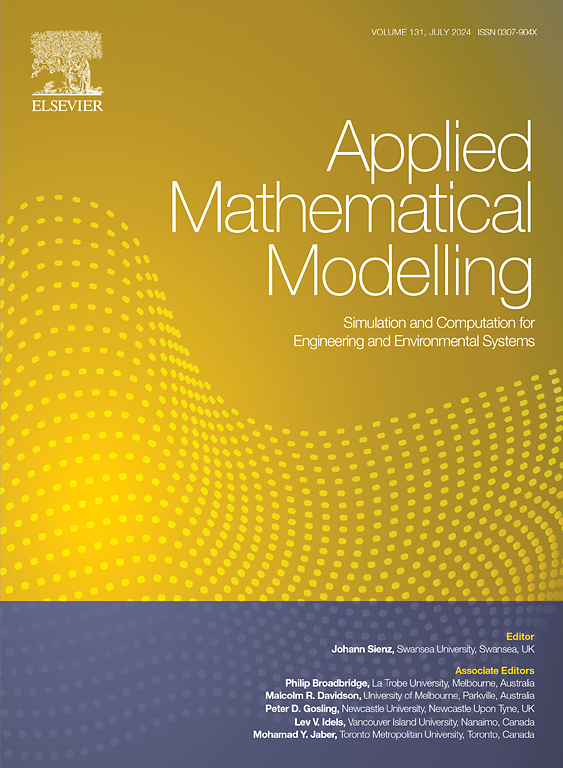A multi-objective integrated supply chain model under dynamic allocation of temporary vaccine centers and uncertain demand
IF 4.4
2区 工程技术
Q1 ENGINEERING, MULTIDISCIPLINARY
引用次数: 0
Abstract
The vaccine supply chain is a complex, multi-tiered system that ensures the efficient production, storage, distribution, and delivery of vaccines to healthcare facilities and populations worldwide. To address research gaps identified in the literature, this study proposes a new multi-objective integrated supply chain model for vaccine distribution. Our contribution lies in designing a model that accounts for multiple periods and supply chain echelons, allowing vaccine centers to be relocated or reopened based on demand fluctuations. Additionally, resources within these centers (vaccine stations) are optimally allocated to enhance efficiency. Given the uncertainty in vaccine demand, we formulate a robust counterpart model using a budget uncertainty set, incorporating predefined bounds to improve solution quality. The model includes three objective functions: minimizing rectilinear distance between supply chain echelons, reducing total costs across the distribution network, and minimizing environmental impact. These objectives are formulated using the goal programming approach to achieve a balanced solution. Due to the complexity of large-scale problems, we employ the K-Means clustering method to enhance model tractability while maintaining solution quality. The model’s efficiency is validated through a case study, showing that as the number of clusters increases from 5 to 35, the total supply chain cost rises by 2.8 %, while the environmental impact decreases by 3.1 %. These results validate trade-offs between the number of clusters and overall system performance. Fewer clusters lead to longer distances between demand zones, increasing transportation costs and emissions, while more clusters result in higher logistics costs due to increased travel and facility use.
临时疫苗中心动态配置和需求不确定下的多目标集成供应链模型
疫苗供应链是一个复杂的多层系统,可确保向世界各地的卫生保健机构和人群有效地生产、储存、分发和交付疫苗。为了解决文献中发现的研究空白,本研究提出了一种新的多目标疫苗分销集成供应链模型。我们的贡献在于设计了一个考虑多个时期和供应链梯队的模型,允许疫苗中心根据需求波动搬迁或重新开放。此外,这些中心(疫苗站)的资源得到最佳分配,以提高效率。考虑到疫苗需求的不确定性,我们使用预算不确定性集制定了一个鲁棒的对应模型,并结合预定义的界限来提高溶液质量。该模型包括三个目标函数:最小化供应链梯队之间的直线距离,降低整个分销网络的总成本,以及最小化环境影响。这些目标是使用目标规划方法制定的,以实现平衡的解决方案。由于大规模问题的复杂性,我们采用K-Means聚类方法来增强模型的可追溯性,同时保持解的质量。通过案例研究验证了该模型的有效性,结果表明,当集群数量从5个增加到35个时,供应链总成本上升了2.8%,而环境影响下降了3.1%。这些结果验证了集群数量和整体系统性能之间的权衡。更少的集群导致需求区域之间的距离更长,增加了运输成本和排放,而更多的集群导致更高的物流成本,因为增加了旅行和设施的使用。
本文章由计算机程序翻译,如有差异,请以英文原文为准。
求助全文
约1分钟内获得全文
求助全文
来源期刊

Applied Mathematical Modelling
数学-工程:综合
CiteScore
9.80
自引率
8.00%
发文量
508
审稿时长
43 days
期刊介绍:
Applied Mathematical Modelling focuses on research related to the mathematical modelling of engineering and environmental processes, manufacturing, and industrial systems. A significant emerging area of research activity involves multiphysics processes, and contributions in this area are particularly encouraged.
This influential publication covers a wide spectrum of subjects including heat transfer, fluid mechanics, CFD, and transport phenomena; solid mechanics and mechanics of metals; electromagnets and MHD; reliability modelling and system optimization; finite volume, finite element, and boundary element procedures; modelling of inventory, industrial, manufacturing and logistics systems for viable decision making; civil engineering systems and structures; mineral and energy resources; relevant software engineering issues associated with CAD and CAE; and materials and metallurgical engineering.
Applied Mathematical Modelling is primarily interested in papers developing increased insights into real-world problems through novel mathematical modelling, novel applications or a combination of these. Papers employing existing numerical techniques must demonstrate sufficient novelty in the solution of practical problems. Papers on fuzzy logic in decision-making or purely financial mathematics are normally not considered. Research on fractional differential equations, bifurcation, and numerical methods needs to include practical examples. Population dynamics must solve realistic scenarios. Papers in the area of logistics and business modelling should demonstrate meaningful managerial insight. Submissions with no real-world application will not be considered.
 求助内容:
求助内容: 应助结果提醒方式:
应助结果提醒方式:


